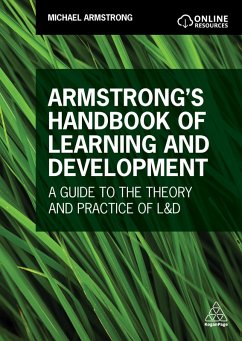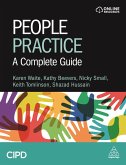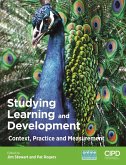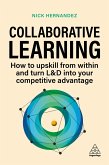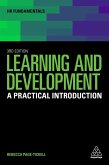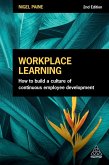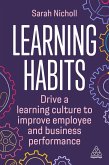This brand-new book from HRM expert and bestselling author, Michael Armstrong, is an ideal companion for those studying learning and development (L&D) at third year undergraduate and postgraduate level as well as practitioners in L&D roles in the workplace.
Armstrong's Handbook of Learning and Development provides an essential grounding in L&D theory including the components of L&D, the distinction between L&D and training, the relationship of L&D to human resources and knowledge management as well as coverage of the role of an L&D practitioner. In addition, this book covers emerging areas of learning such as digital, social and workplace learning as well as some of the latest developments including micro, connected and personalized learning as well as earning experiences. There is also coverage of how to use AI, gamification and curation to support learning and how to host both online and offline learning events.
Supported by case studies and examples to put the theory in context, reflective exercises to consolidate learning and further reading suggestions to broaden knowledge and engagement with the topic, Armstrong's Handbook of Learning and Development is crucial reading for academic success. The final part of the book includes additional aspects of L&D including apprenticeships, leadership development and personal and interpersonal skills development. Online resources include lecture slides for every chapter, a lecturer manual and student manual.
Armstrong's Handbook of Learning and Development provides an essential grounding in L&D theory including the components of L&D, the distinction between L&D and training, the relationship of L&D to human resources and knowledge management as well as coverage of the role of an L&D practitioner. In addition, this book covers emerging areas of learning such as digital, social and workplace learning as well as some of the latest developments including micro, connected and personalized learning as well as earning experiences. There is also coverage of how to use AI, gamification and curation to support learning and how to host both online and offline learning events.
Supported by case studies and examples to put the theory in context, reflective exercises to consolidate learning and further reading suggestions to broaden knowledge and engagement with the topic, Armstrong's Handbook of Learning and Development is crucial reading for academic success. The final part of the book includes additional aspects of L&D including apprenticeships, leadership development and personal and interpersonal skills development. Online resources include lecture slides for every chapter, a lecturer manual and student manual.
"This book is both thought-provoking and academically astute; it explores various emerging areas within learning and development concisely and clearly. Armstrong is able to bring theory to life, helping readers to develop their own understanding of critical HR practice." Rebecca Huws, Human Resources Lecture/ CIPD Programme Lead, Cardiff and Vale College

